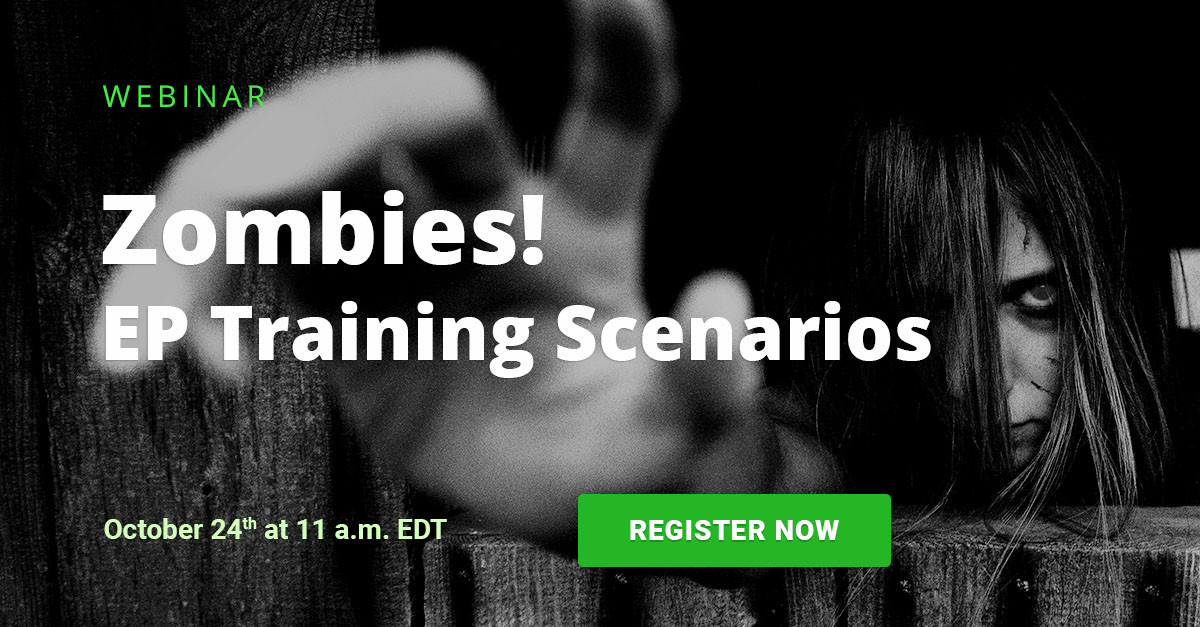Walkthrough, Tabletop Or Live Event? Choosing Your Exercise
The importance of regularly conducting emergency preparedness training exercises cannot be overstated. Businesses face a wide spectrum of risks – from cyber threats, pandemics and terrorism to natural disasters – and regular training can ensure an organization's resiliency and keep its employees safe.
But you don't want your training to become predictable, stale or too expensive. You also need to choose a program that is customized for your organization; for example, a company that employs mostly remote workers will not need much on-site training, but can still educate its employees.
The Three Types of Exercises
Once you write your emergency preparedness plan, there are three main types of exercises that your organization can implement:
Walkthroughs
Up to three people would ideally take part in the walkthrough, including the plan's author. In this discussion-based exercise, you walk through the steps of the plan. At least one should be playing devil's advocate in order to spot areas for improvement. With objective eyes seeing the plan in motion, it's an inexpensive and low-risk method for making sure that your plan is in good shape, said business continuity expert Bob Clark.
“Walkthrough sessions are not intended to be concluded with the answers to any issues that have been raised,” Clark said. “That is something that you would normally take offline and deal with independently. And if necessary, you go back and have another walkthrough. Or maybe, a walkthrough of that part of the plan that people felt uncomfortable about.”
The plan can be updated, confirmed and distributed to staff afterward for a tabletop or live event.
Tabletops
A workshop is a good example of a tabletop exercise. It can be led by the staff emergency preparedness manager or outside consultant, and should include more people. In this case, while you're open to suggestions, the plan should be pretty firm and it is more of an orientation than a discussion. It can start with a presentation, video or literature (or a combination of any of those) and become a forum for employees to discuss concerns.
“There may be situations in there where the plan says 'in the event of X happening, then we need to contact so and so,'” Clark said. “It could be someone within the organization or a third-party supplier.”
Clark added that a third-party would not normally be called for emergency preparedness events, so be sure to confirm with local first responders if you make assumptions about how they would react to a given situation.
Live Events
Any live event needs to have defined roles, a budget, a set location for the training and any necessary supplies. Organizers can also consider having third-party consultants and/or first responders involved. There are two types of live events and both come with advantages and disadvantages: Pre-planned and unannounced.
Pre-planned ones are scheduled and attendance is often mandatory at the workplace or a predetermined site.
Unplanned events occur when messages are distributed and people are expected to respond immediately.
“When committing to live exercises, they are more expensive because they can be disruptive to an organization’s operation. And it’s also much higher risk,” Clark said. “If you do something which ultimately compromises your organization’s operation, you may find that any business interruption you have suddenly becomes the fault of the exercise.”
However, advantages to live events include knowing that employees have engaged in the training and are more likely to retain the protocols in the event of a real emergency. It will also open and maintain communication with local first responders.
Other Important Attendees and Feedback
Clark recommends having a scribe onsite to document the training. This does not need to be solely in writing – a videographer can be just as effective, particularly during live events. This will help later with troubleshooting and solidifying the best possible plan.
Feedback from participants is also critical and Clark advocates for two sessions – a hot and cold debrief. A hot debrief happens immediately after the training and aims simply for direct feedback. Follow up with a cold debrief about two weeks later, so that participants can more clearly reflect.
“People may wish to add ideas because sometimes they were heated and emotional during the training,” Clark said. “You need to give people the opportunity to cool off and determine if they see things in a different way afterward.”
From there, he added, you can review their comments (as well as from the trainers and first responders) and feed it back into the training process, making it even more efficient and impactful for the next time.
For more information on how to implement emergency preparedness training programs, visit here for AlertFind's recent “zombie training” webinar with business continuity expert Bob Clark.

You are well on your way toward protecting your staff and organization.
Take the next step toward protecting your organization by learning more about emergency notification systems and the vital role they play in your emergency preparedness plan.
